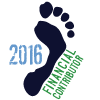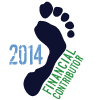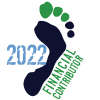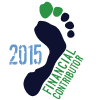Thanks, that sounds like a real logical way to progress through it. I wonder if it reacts similar to linear strength training, the progression of distance I mean. I can go a pretty good distance before it starts to get inflamed but once it gets there and I am running downhill it's just excruciating.
Yep that's exactly my confusion with the strength training, they say to do hip thrusts.. ok I can load 315 and knock out 10 reps pretty easily. Bird dogs, I have no problem doing 50 in a row and I quit cause its just too boring. So I can't imagine that strength really is a problem? I also think I am pretty flexible too, so I am not sure that's an issue.
I really am sold on it just being a shoulder imbalance chain reaction and its a bona fide overuse issue? But who knows and yeah pistols, seriously if one squat hurts my knee its pistol squats.
Yeah I have gotten through the denial stage about the bench and am moving in to the slow gradual rebuild stage. Thanks for the encouragement, I hope at the very least I can press without pain.
How are the shingles coming along?
I've found the progressive approach works for pretty much everything. Just find out what you can do, and then try to add to it little by little. It's all about getting the dosing right. Just enough to stimulate an adaptive response, but not more than your body can handle at any given time. The problem is being patient when you're used to doing more. This time around, I've been a bit more patient about getting back into running shape, and it's working pretty well. I stop running as soon as I feel my legs getting tight, then try to add 1/4 to a 1/2 mile the next time. My guess is that the point at which my legs start to get tight is symptomatic of having achieved the stimulus required for adaptation. Any more than that is probably overloading past the point that I can usefully recover and adapt from the stimulus before the next run. When I look back at the last year and think how much further I would be along in both my running and lifting if I had simply listened to my niggles, stopped, and lived to battle another day, I think I would be much farther along by now. Especially the glute/sacro-iliac injury, where I was warned one rep before the injury. If I would've stopped before the next rep, I would've only have lost that day's training stimulus a bit. Instead, I lost months.
Yesterday my right calf and then hammie and glute began to tighten up on my walk/run. So today I'm skipping deadlifts, maybe squats too.
Anyway, back to your ITBS. If you can run 10 miles, for example, before it starts to act up, then run 8-9, stopping every mile or so to stretch. And then be super cautious about slowly adding in more distance, like give yourself a few weeks to build back up to the point where it last gave you trouble, and see if it's OK. If it is OK, then continue building up slowly. For me, the point of ITB irritation was about four miles, if I remember correctly. So I danced around the 3-5 mile range for several months before I was able to exceed it, but once I could, I was pretty much home-free.
I'm also a little suspicious about the imbalance diagnosis, but the kinetic chain is a complicated thing, for sure.
My shingles have been healing little by little, but this weekend was kind of bad. It started with waking up at 3am Friday morning with really bad stabbing pain in my left armpit. It had been OK Tuesday through Thursday, so I was a little depressed to have it get worse again. I took some more Gabapentin, which knocked me out for the day, and made Friday afternoon's workout all but impossible. The rest of the weekend wasn't much better.
Nonetheless, the burning sensation in my skin is all but gone, and the area that's still affected by the stabbing pain is always decreasing. I don't have any pain in my back any more, and very little in my chest. It's mostly my armpit and the underside of my left upper arm.
And today, so far, it feels pretty good. I haven't taken any pain killers yet. It would be great to get off the Ibuprofen. I'm fully functional now, and hopefully the pain will be gone for good in a few weeks. The stabbing pain is kind of like a little lightening storm, but today it's dull enough that I can mostly ignore it.































